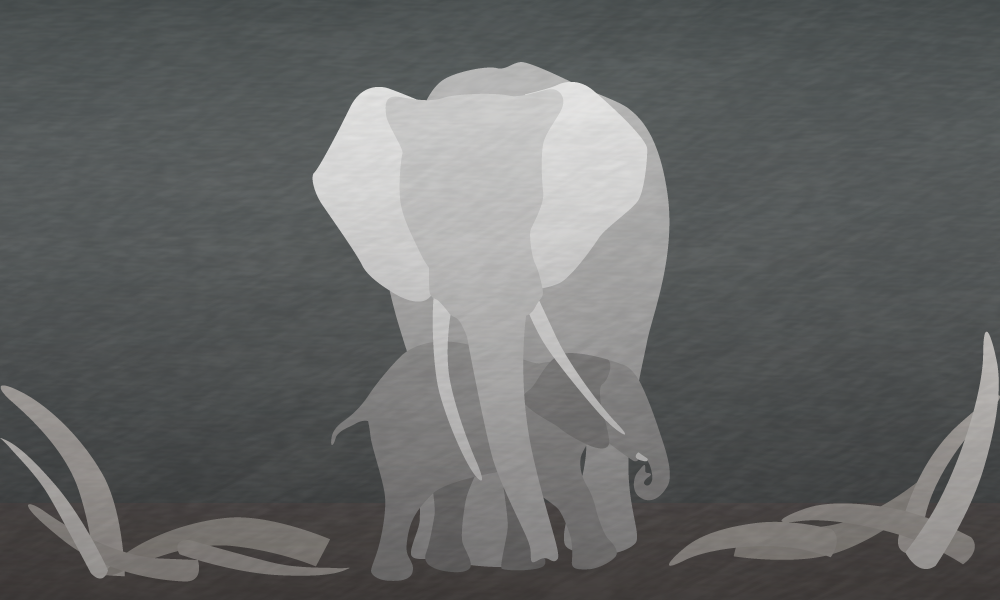“By the next day his corpse had bloated into a thing like a crashed zeppelin, with legs stuck out straight, his thick hide splashed white with droppings that ran down the cork-tree wrinkles of his flanks.” -Journalist Aidan Hartley wrote about the stinking carcass left behind in yet another instance of ivory poaching in Kenya.
The number of African elephants slain every year for their tusks? A staggering 25,000.
This unsustainable slaughter has led to a global outcry from animal lovers, scientists, schoolchildren, politicians. Public revulsion is now at a level reminiscent of the run-up to the 1989 ban on cross-border sales of ivory imposed by CITES (the Convention on International Trade in Endangered Species) in 1990.
But this time there’s an additional layer of despair, stoked by mounting fears that the situation is out of control. As Hartley confessed, “Whatever we have been doing up to this point has failed.”
In some ways it was inevitable that elephant advocates would grow impatient with critically important but slow-paced efforts to help rural communities co-exist with Africa’s herds, root out endemic corruption in range states, and expose international wildlife trafficking rings.
Now, nearly three decades after the ban, with no end to elephant poaching in sight, their attitudes have gone strident, spiraling into emotion-driven campaigns and unhinged extremism that threatens to turn the war on poaching into an incoherent war on ivory.
Ardent campaigners have clamored for militarized anti-poaching patrols, despite the alarming levels of extra-judicial killings. They’ve called for the burning of national ivory stockpiles to “send a message to poachers,” who clearly understand that ivory would be scarcer and more valuable and have stepped up killings accordingly. They’re now calling for closure of domestic ivory markets world-wide, hoping that choking off any legal availability will somehow dry up demand, ignoring warnings that it will make ivory more desirable, even if illegal.
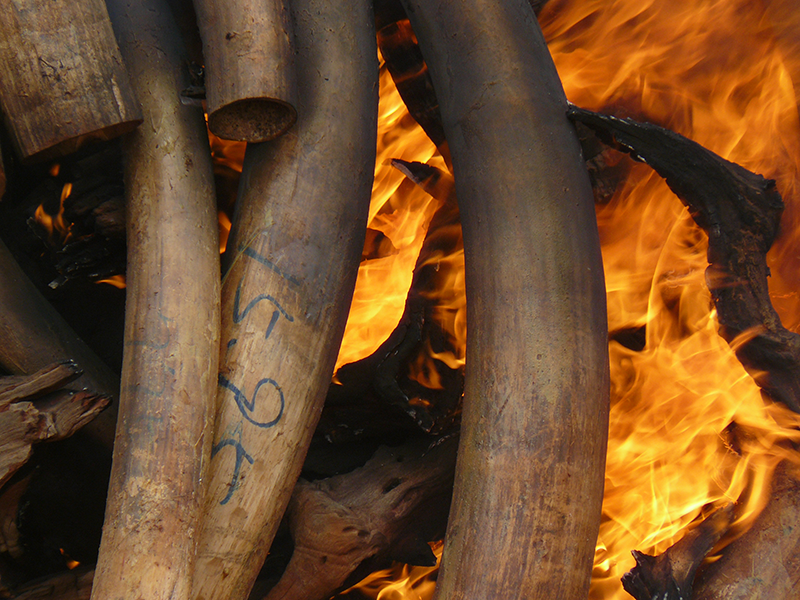
Ivory demand is key. One striking video created by WildAid, an organization that draws on celebrity clout to battle illegal wildlife trade, features former basketball star Yao Ming blocking an elephant poacher’s bullet with his bare hand, Superman-style. The voice-over intones, “Never buy illegal wildlife products.” Without demand, there’d be no sales, no carving, no traffic in tusks, no poaching; hence the tagline, “When the buying stops, the killing can too.” Unfortunately, this neat formulation of knock-on effects presupposes that all ivory is dubious, in which case ending all ivory buying starts to look like the elephant’s salvation.
Several recent developments continue to feed that hope. Following the example of the US and France, China’s about-face declaration last December that it planned to close its legal ivory market by 2018 was hailed as a “huge win for elephants.” The expectation is that the end of legal sales in China — often used to launder illicit ivory — might help throttle the country’s enormous black market, thought to absorb 70 percent of all contraband tusks.
What many elephant advocates have long dreamed of is now starting to look possible: global cessation of the ivory trade, including both cross-border sales, and all domestic transactions everywhere. In other words, total ivory prohibition, world-wide.
Will it really go that far? A critical test case is the U.K., now embroiled in a high-pitched debate over banning domestic trade in ivory antiques (defined there as pre-1947 carvings).
Critics argue that the U.K. antiques trade provides easy cover for poached ivory — simply tea-staining post-1947 ivory makes a carving look much older — and should be ended.
If the U.K. government enacts a total ivory ban, as it pledged to do in its last two election manifestos, it will go far beyond the short list of countries that have banned most ivory sales. All those bans still include exclusions for the limited trade of ivory antiques and culturally important art.
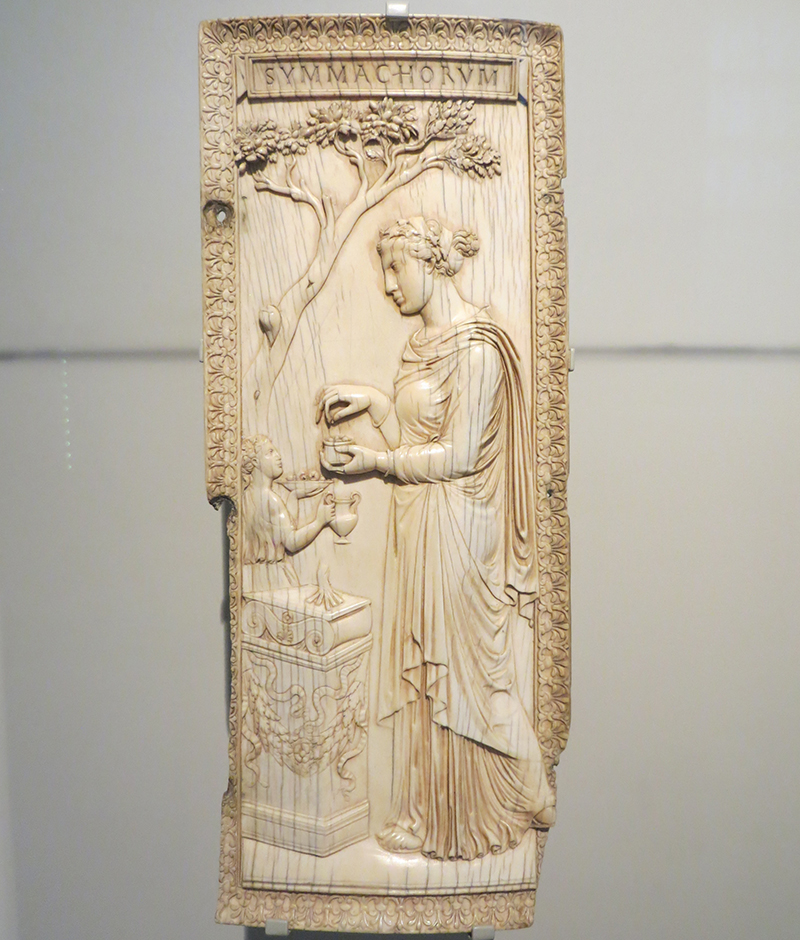
That was the sticking point when U.K. M.P.s debated the issue in early February. Victoria Borwick, former Conservative M.P. and current President of the British Antique Dealers’ Association, said “we must stop the current trading in raw and poached ivory, but that is not the same as trading in antique cultural artifacts.” Ulster Unionist M.P. Danny Kinahan, an antiques dealer, agreed. “If we had a blanket ban,” he said, “we would be a little bit on the same page” with the Islamic State’s destruction of Palmyra.
Other M.P.s vigorously disagreed. Labour’s John Mann proclaimed “there should be no half-measures, mixed messages, little promises or small steps forwards. A total ban is what I want.” Owen Paterson, Conservative M.P., observed, “it’s amazing that we might be learning lessons from China,” adding, “It is simply not possible to maintain the high moral ground and tell other countries what they should be doing if we have not set an example.”
Those M.P.s insisting on no exceptions to any domestic trade shutdown quickly found that the idea didn’t seem prudent to everyone. By mid-March, the government was backing off its earlier promise to adopt an all-out ivory ban, in favor of banning trade in raw ivory (i.e., tusks) while permitting the sale of antiques. However, in early July, foreign secretary Boris Johnson reaffirmed the earlier Conservative position to press for a total ban.
•
The ivory issues the UK is debating erupted three years ago at the Illegal Wildlife Trade Conference in London, when representatives from 46 countries pledged to terminate trafficking of illicit products, ramp up enforcement, and find solutions for communities plagued by wildlife crime. Yet the event is most likely to be remembered for the emergence of an extremist ideology that swirled around the conference, calling for the outright destruction of ivory carvings, no matter how old or revered.
Prince Charles, who attended the conference with sons William and Harry, asked that any ivory artifacts on display in his various homes be taken off view. Prince William went quite a bit further, calling for the destruction of all 1,200 ivory art objects in Buckingham Palace, including a dazzlingly ornate Indian throne presented to Queen Victoria, in order to “send a message.” Art and antiques experts were apoplectic — “bonkers beyond belief” was one reaction — but the gesture thrilled anti-ivory trade campaigners who chimed in with cries of “bring on the bonfire of royal ivory.” The International Fund for Animal Welfare (I.F.A.W.) urged the public to “surrender” their legally acquired ivory to a pre-conference demonstration crush outside the Houses of Parliament to put pressure on the delegates.
The well-publicized ivory destruction may have swayed representatives from Gabon, Chad, Ethiopia, Botswana, and Tanzania, who pledged a ten-year moratorium on seeking a CITES exception to sell their legal ivory stocks. This marked an abrupt change in policy for the last two nations, which had previously asserted the right to sell their ivory. The multi-nation reversals on ivory trade were underscored by the mediagenic series of ever-larger national stockpile destructions in the months that followed, topped off by Kenya’s staggering 105-ton ivory burn last year, which destroyed five percent of the estimated global stock. Its pyres took over a week to build and days to completely burn, thrilling anti-ivory zealots with the sight of so many tusks going up in smoke.
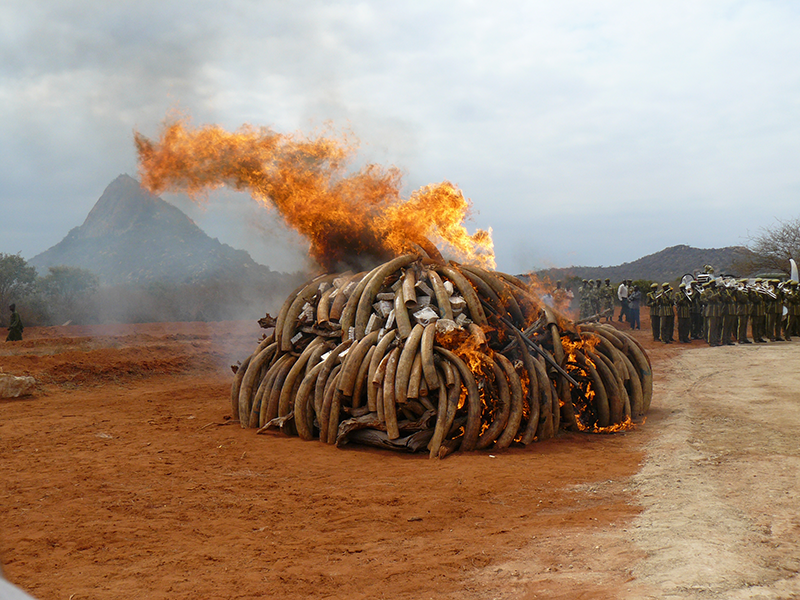
It almost seemed as if elephant ivory, coveted for its pale beauty and unsurpassed carvability since pre-history, had finally lost its luster.
Well, not for everyone. Ivory buyers in Asia still value it as a marker of wealth and status even if many candidly admit to twinges of remorse for elephants. The bedrock belief that elephants are infinitely more important than the tusks they carry may be widely held in North America and Europe, but less so elsewhere, and not at all by those who pay poachers to slay them in order to traffic in their tusks.
•
Ivory demand can be shaped, but it’s impossible to snuff out interest in it entirely. It’s not a passing fashion, like 17th century Dutch tulip mania; it’s inextricably woven into human history, deeply ingrained in numerous cultures.
No other prized organic material — amber, pearls, rare woods, tortoise shell — is remotely close in historical importance. Some 40,000 years ago, the first figures humans carved — bulbous Venuses, lion-headed men — were made out of ivory fragments from woolly mammoths.
Over millennia, desire for this natural treasure reached across borders and societies, eventually spawning a global trade in elephant tusks that made possible exquisitely detailed sculptures, bas-reliefs, combs, ornaments, and amulets.
By the mid-1800s, industrialization of ivory products, including piano keys, knife handles, and billiard balls, fueled soaring Western demand. European traders went deep into the African continent, bartering with locals or, lacking patience, attacking and plundering villages for their caches of elephant teeth — tusks are actually immense incisors — partly comprised of “found” ivory taken from the carcasses of elephants that died naturally. When those yields fell, ivory hunters equipped with suitable firearms went directly to the source. From 1850 to 1914, a period when Britain imported some 500 tons of tusks per year, an average of 44,000 elephants were killed annually.
Before WWI, when American production of pianos surpassed that of Germany, the U.S. became a leading importer of ivory. E. D. Moore, an American ivory buyer in Zanzibar in 1910, and, 20 years later, author of Ivory: Scourge of Africa, wrote “You may be sure that your bit of ivory comes from an elephant expressly slaughtered for the ivory it carried.” But few were listening.
A century ago, what saved elephants from being wiped out across Africa wasn’t public opinion. Two world wars, the Great Depression, declining piano sales, and the rise of plastics caused a steep decline in ivory demand, drying up poaching. But it never completely disappeared.
The illegal off-take of African elephants by poaching, bad as it was, didn’t threaten them with annihilation until the growth of Asian economies in the postwar decades renewed interest in ivory, which had long been venerated in the Far East as a precious carving material.
In the 1970s, Hong Kong and Japan together were importing three-fourths of the global ivory supply. Poaching soared as prices climbed to new heights. The weight of the typical tusk in the trade dropped alarmingly, a tip-off that big males were being shot out, leaving females and juveniles to be targeted. Following the 1989 CITES-imposed ivory ban, poaching dropped, but only briefly, resuming when clandestine trade routes were established.
•
Many of those aware of the CITES ban don’t realize it only limits international trade in ivory, not trade in ivory inside countries. Legal domestic markets consist of internal trade in long-held ivory coupled with permitted ivory imports and exports such as antiques, household goods in transit, and sport-hunted trophies. After millennia of global commerce, the vast number of pre-ban ivory carvings in public and private hands means that short of making possession unlawful everywhere, there will always be some form of legal ivory and its lawful exchange.
What’s more, excising pre-ban ivory from every possible cultural context in which it is embedded meets with understandable resistance. When the U.S. Fish & Wildlife Service announced new rules at the end of February 2014 to make it difficult even for centuries-old ivory antiquities to change hands, I.F.A.W. was thrilled by a ban that was “as close as possible to an across-the-board prohibition.” But U.S. collectors and craftspeople, auction houses, art and antiques dealers, and museums were alarmed at the implications.
Months later, after considerable pushback from musicians who use antique instruments, exceptions were carved into the U.S. rulings to allow orchestras like the New York Philharmonic, which has long traveled internationally with up to 400 ivory-tipped antique bows for stringed instruments, to continue to do so — and to purchase antique examples of such items.
There are similar provisos in China’s new sweeping ivory ban that allow “cultural relics made of ivory” to “be auctioned under strict supervision.” And while the E.U. has just banned raw ivory exports, the export and intra-E.U. sales of pre-ban antiques are still permitted, under “strict conditions.”
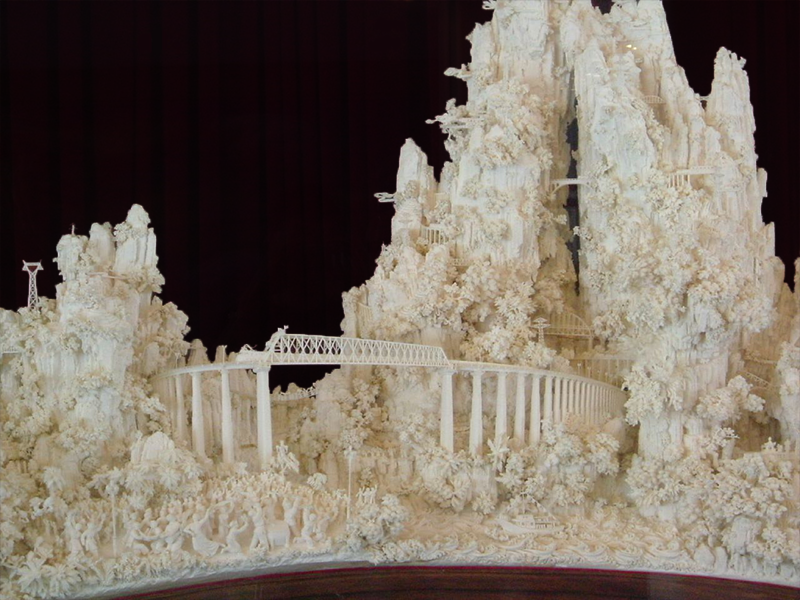
These almost-but-not-quite-total bans fail to impress anti-ivory campaigners, who regard any exceptions for pre-ban carvings as “loopholes” that should be closed to prevent ever-clever smugglers taking advantage of them — no matter what the cultural cost.
The prospect of a no-exceptions U.K. ban doesn’t sit well with institutions like the British Museum, which regards banning trade in antiquities as a bridge too far — and one that won’t help elephants. Its holdings, which include the 3,000-year-old Nimrud ivories, “play an indispensable part in the museum’s presentation of the history of human cultural achievement.” The museum sees “no public benefit” in “restricting the display or movement of ivory works of art made before l947.” Historians and art dealers have lined up behind this view, equating a total ivory ban with “cultural vandalism.”
How would ivory art in museums be affected by closing down the antiques trade? Once all ivory, ancient or modern, poached or not, is stigmatized, keeping it on exhibition is sure to come under censure. Historically important sculpture — Byzantine plaques, Islamic oliphants, Baroque figurines, Japanese netsuke — is increasingly viewed through narrowed eyes. In the context of a total ban, exhibiting ivory will be equated with glamorizing it, feeding demand and normalizing its possession. There’s little doubt that a total ban would hamper museum collections, loans, and research and render culturally important ivory in private hands worthless.
•
Admittedly, one problem in policing the U.K. antiques trade is the inability of law enforcement to clearly distinguish bona fide antiques from newer carvings. That opens the possibility of illegal ivory being papered over with false documentation, sold off and shipped out. What’s needed, as Martin Levy recently argued in Apollo Magazine, is an “authentication process” that could date pre-1947 objects with confidence.
So far, though, no quick, inexpensive, non-invasive means of dating ivory objects exists. Yet that day may not be far off. Recently developed low-cost Carbon-14 dating makes it possible to determine the year of death of the elephant that supplied the ivory. Unfortunately, the test requires destructive sampling, only a tiny amount, but still not something that could be done on small carvings. Unless the determination of expert panels would also be acceptable, that puts a lot of carved ivory into legal limbo, awaiting a technological breakthrough.
If there were a simple, inexpensive way to date antiques, would that satisfy campaigners? Apparently not, because these objects would still exist, remaining as seductive as ever, and any trade in them might stimulate demand. To crave ivory is to “crave death,” according to actress and ardent elephant advocate Virginia McKenna, best known for her role in the 1966 film Born Free. This sort of hyperbole seems like a conscious effort by campaigners to overshoot the mark, so that if public outrage stops short of backing total confiscation, ivory will still be permanently blackened by association and interest in it will somehow die out.
Some might shrug off the loss of ivory artifacts as acceptable collateral damage in the war on poaching. But the existence of a vast amount of impeccably legal ivory in the form of bona fide historic carvings means that total prohibition of absolutely all commerce, even trade in culturally important antiquities, will never be completely accepted everywhere. Enacting such a sweeping no-exceptions ban could backfire badly. Many would view it as bureaucratic over-reach, encouraging disdain for regulation and stimulating the criminal ivory market — and the elephant poaching that makes it possible.
What’s the alternative? Recognize that ivory can’t be expunged, only managed. And make exceptions for bona fide, pre-ban ivory in any overall trade ban, as several major countries have already done. Anti-trade advocates like to say that commerce in raw ivory, even guilt-free ivory recovered from elephants that die of natural causes, is impossible to regulate (although that’s not a foregone conclusion, as I’ve argued elsewhere).
But a legal ivory trade confined solely to the closed universe of bona fide antiques is a very different kind of commerce than raw ivory, and far simpler to regulate. It would amount to a small, transparent art market in which — no surprise — the impeccable provenance of every item would be all-important. In addition, a significant portion of profits from sales could be earmarked for elephant conservation.
Anti-ivory crusaders want none of this. Having fully embraced a ban-it-all mentality, they’ve long dismissed the “old argument that we can save elephants by selling their teeth.” Their understandable anger over elephant poaching has now shape-shifted into misplaced rage against pre-ban ivory carvings. It’s as if the substance itself was somehow complicit in all the evils ever committed to satisfy the desire for it and indelibly compromising the art made from it.
It’s one thing for activists to show disgust at elephant poaching by trashing their own ivory bric-a-brac or making a sacrifice of grandfather’s ivory letter opener. Advocating that ivory objects from art collections and museums be thrown on a blaze is quite another. It amounts to a re-kindling of the late-15th-century “bonfires of the vanities” that Girolamo Savonarola, the Dominican friar and puritanical leader of Florence, held in that city’s public square, to which mirrors and masks, ornaments, musical instruments, paintings, sculptures, and other supposed enticements to sin were consigned.
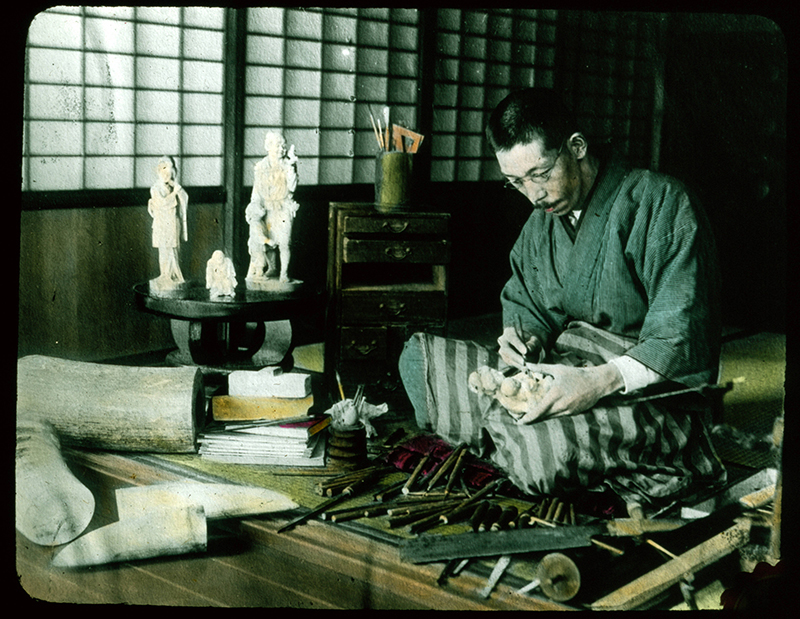
•
From the 16th century on, European workshops routinely gathered the shavings left over from ivory carving, then carbonized them for hours in a covered crucible set deep in glowing coals. The charred contents, ground to powder and mixed with linseed oil, made a paint that could mimic perfect darkness: ivory black. Rembrandt used it to great effect in his somber self-portraits. It was the deepest possible black of blacks, as if ivory had been turned into emptiness, so that no light could be reflected back from it.
This once obscure art historical detail has become an all-too-appropriate metaphor for the latest burn-it-at-the-stake demonization of ivory. Ivory hatred has metastasized to the degree that the most strident campaigners are now calling for the unthinkable: the destruction of all paintings, including those in public collections, that harbor even a trace of carbonized elephant tusk in their pigments. These extremists would consign a vast swath of art from Leonardo to Picasso to an auto da fé, effectively eviscerating the world’s museums.
Granted, there is no way to tell if the ivory used in a bona fide antique carving came from a found tusk or one hacked out of a slain elephant. But for most of human history, people thought wildlife was inexhaustible, and ivory as well. The idea that historic ivory objects should be treated as cultural regrets and taken off view, even destroyed, distracts from real-world efforts to ensure a future for elephants.
Those in the U.K. and elsewhere calling for snuffing out trade in bona fide ivory antiques are undermining attempts to restrict legitimate ivory interest to a highly limited, highly controlled commerce that helps rather than harms conservation. Having taken a dogmatic position, the loudest anti-ivory voices at present will find it hard to later concede it’s not necessary to obliterate cultural heritage to protect these extraordinary creatures.
Destroying every last ivory artifact on the planet — picture a vast forest fire’s worth — won’t bring back a single poached elephant.
But it will irreversibly damage our shared culture. •
Feature image created by Shannon Sands. Sculpture imagea courtesy of Rob Young, University Victoria, Jononmac46 via Wikimedia Commons. Other images provided by John Frederick Walker.
